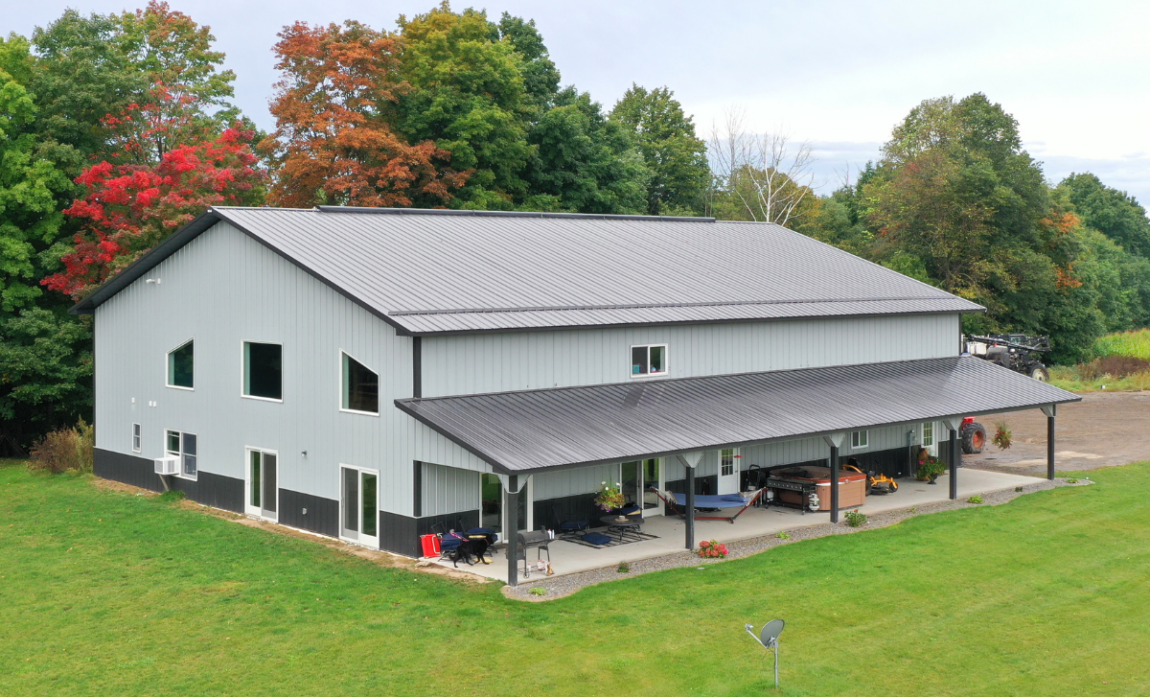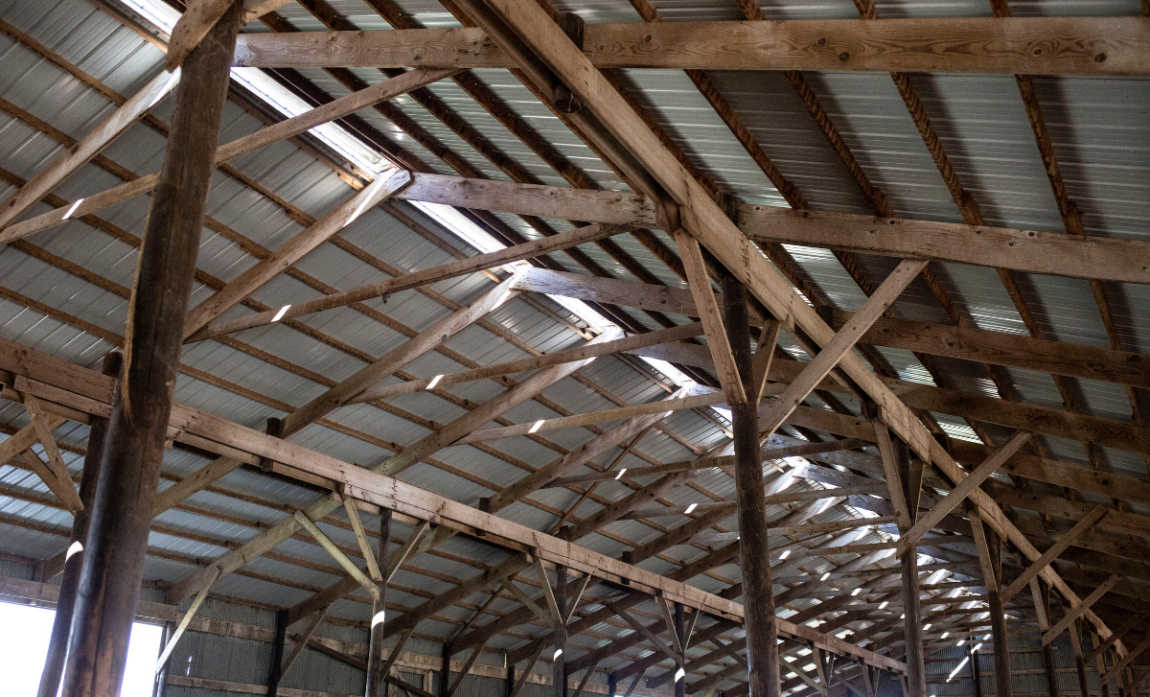Modifying a building that isn’t structurally prepared for snow loads is difficult and expensive. That’s why if you live in a climate that expects snow, you need to plan for it early. Here are seven ways to design your post-frame building to withstand potential snow loads.
The problem with improving a building that’s structurally unprepared for snow is that it involves a number of steps. First, you need a structural engineer to assess the building, and then propose the required improvements. After that, they need to retrofit all the changes, which can become expensive if the structure is already designed.
However, if you do the job right during the building’s planning phase, you can avoid those extra costs and headaches. All of that starts with the structure’s design, and ensuring your design team uses seven tactics to reinforce your building against heavy snow.
2. Use Machine Stress-Rated lumber – Machine Stress-Rated (MSR) lumber is tested by a machine so you know the exact strength of every piece used in construction. Contrary to the industry standard Visually Graded lumber, MSR lumber provides an exact strength measurement, so you know the minimum strength of every element of the building, and how much snow it can handle.
3. Build truss for expected snow load – Trusses, along with columns, are the primary load bearing elements of a building. Essentially, the weight on the roof is transferred from the steel to the purlins, then to the trusses and columns, and finally to the ground.
The most suitable trusses for snowy conditions will be sturdy, made of strong MSR lumber and have truss plates that are designed to support large loads of snow. The column strength should also match the trusses to prevent a failure at any point in the transfer of weight.
4. Consider the prevailing winds and building orientation – A lot of people think snow loads are constant across a building’s roof. However, when wind blows – as it often does during snowfalls – the weight of the snow becomes unevenly distributed.
To offset the weight variance, a designer and engineer should design the building accordingly. They’ll need to pay extra close attention to the places where roof lines join together – such as if you have an office or porch that extends off the building – which often create uneven snow distribution.
5. Install concrete in the summer or fall – Normal concrete’s chemistry is such that it requires moderate temperatures and weather to evaporate the moisture after it’s poured in order to set. If you pour concrete in the extreme cold, the moisture will freeze, and the concrete won’t set correctly.
There are additives that allow concrete to set in the winter without freezing, but it costs more than standard concrete. That’s why we recommend always pouring concrete in the summer or fall whenever possible in cold climates, and to then build the building itself in the winter if need be.
6. Prepare the site properly – Proper site preparation is key for eliminating ground table moisture that can affect the inside environment of a new building.
7. Build drainage that will drain snow melt away – Make sure your design team considers how much snow you expect and builds a solid drainage system that will move melted snow away from the building. The last thing you want is pooling water next to your structure.
Heavy amounts of snow can place a tremendous amount of stress on your post-frame building. But an engineering and design team that designs your building with snowfall in mind can ensure it lasts the winter without costing you a fortune.





